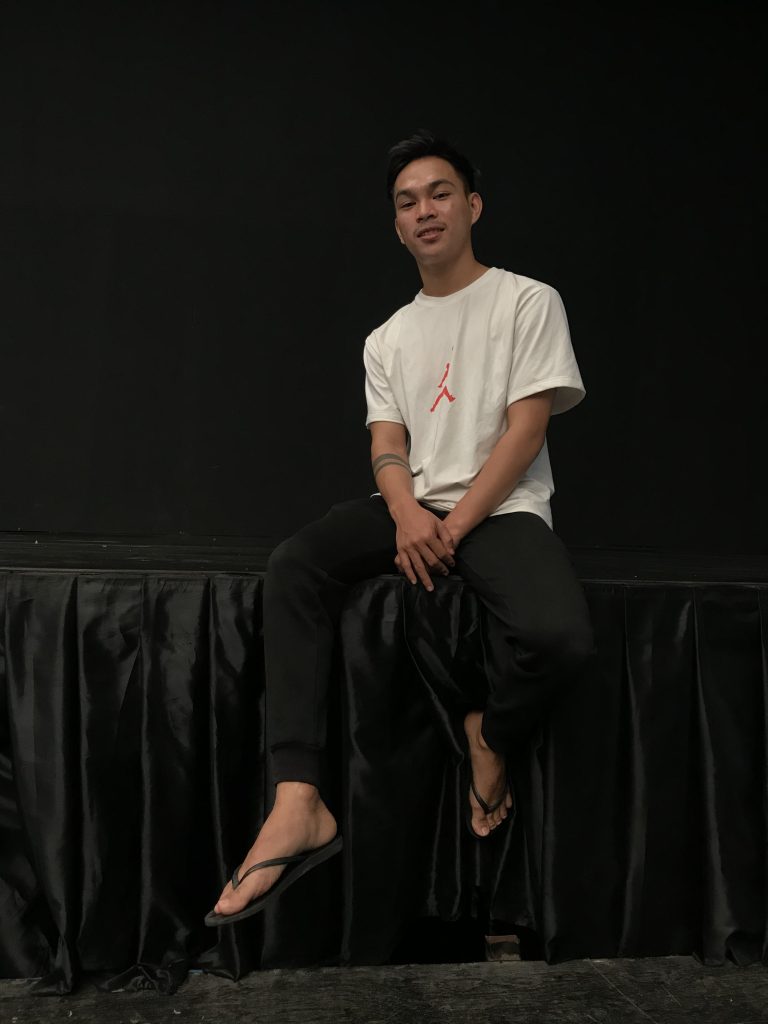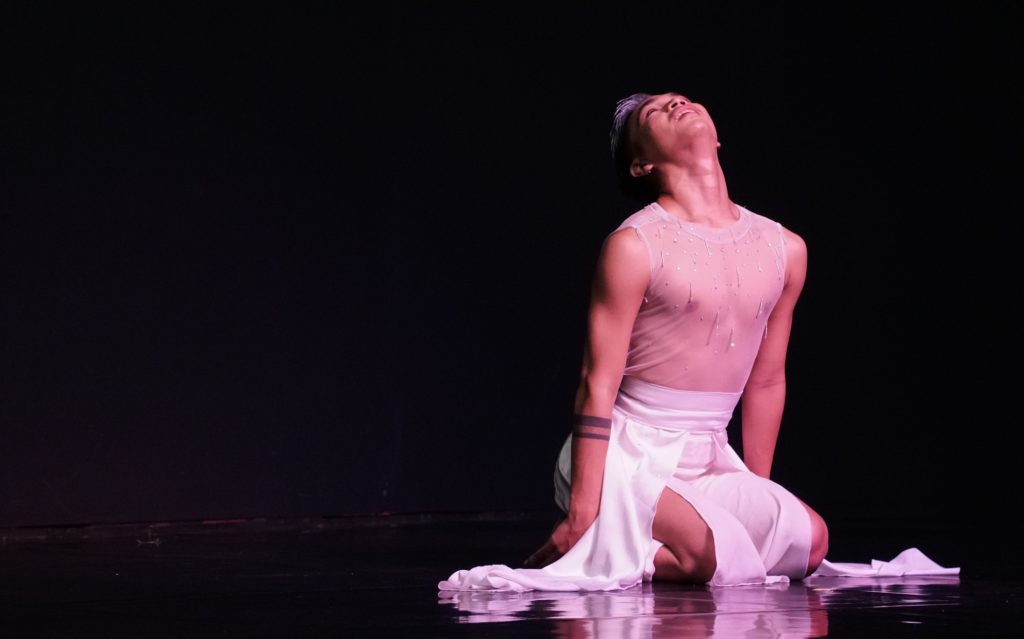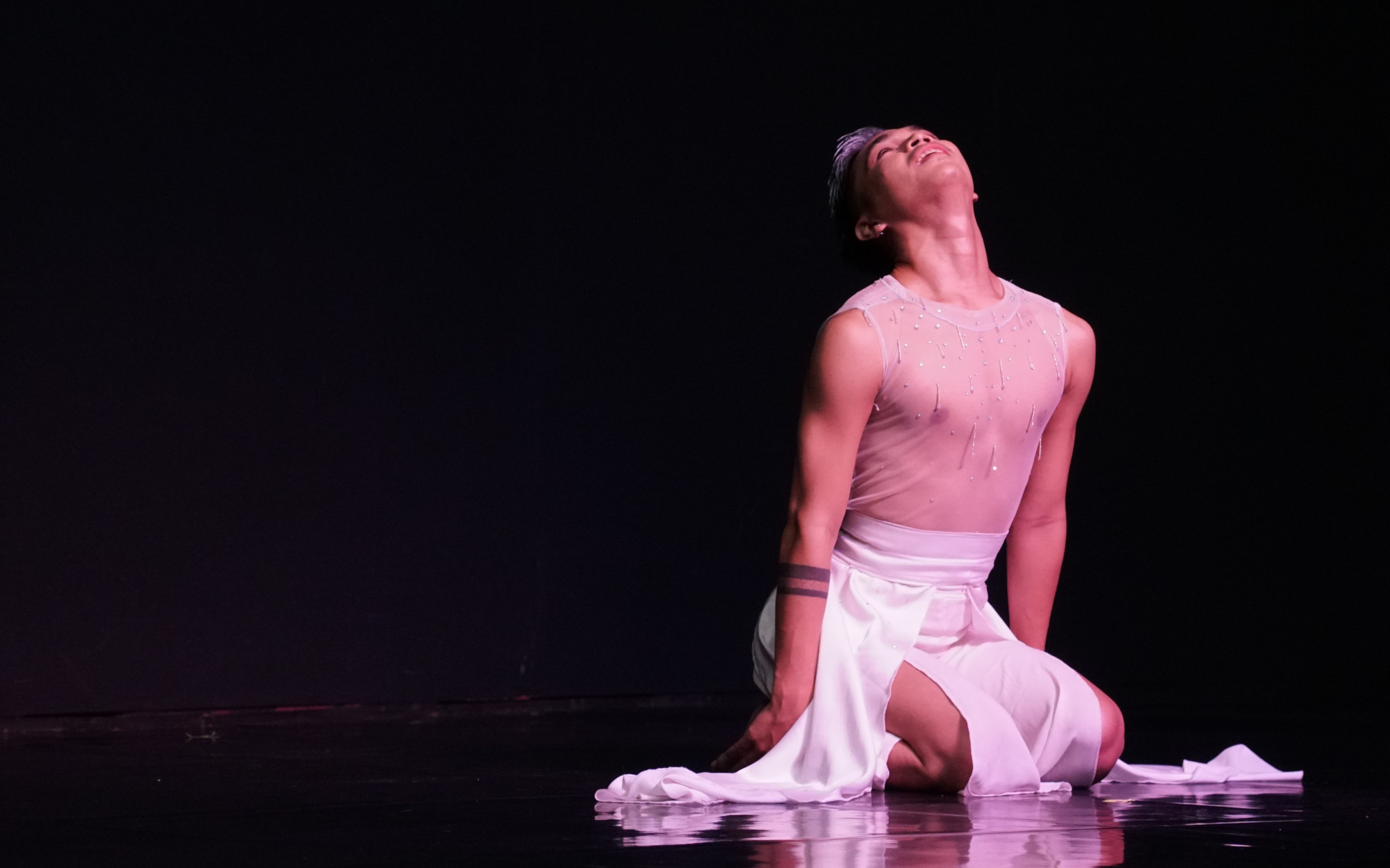CHOUNG Veasna: An Interview with one of Phnom Penh’s Emerging Choreographers
Amidst the Cultural Season’s exploration of identity, in this two part interview series, we feature reflections from young people shaping the boundaries of tomorrow, today.
It was four days before the full performance of Dark when I met CHOUNG Veasna on a sunny afternoon at the Cambodian Living Arts stage at the National Museum of Cambodia. Last time I saw him here the space was filled with staff, artists and volunteers for the Sampeas Kru ceremony. Today, the performance hall was empty. Without any colored lights gleaming, soft natural light filtered in through the translucent ceiling giving everything the slightest sepia tone. He greeted me how one greets another in Cambodia, hands together with the tips of fingers near the chin. He was wearing joggers, flip-flops and a white Nike tee with the iconic Michael Jordan “Jumpman” logo in red. Coincidently, the logo coordinated seamlessly with the red COVID-19 Xs on the pews. Keeping a distance, we sat down on the black benches and began the interview.
Thanks for meeting with me today, Veasna and for this beautiful production. Could you tell me what inspired you to choreograph a piece about finding your path and staying true to yourself?
Veasna: I wanted to show how young people are living, in our lives, how we’re growing up. In one section of the performance, I illustrate my own personal life. I try to show how we all hold biases and discriminate from one group to another. I also wanted to expose how people look down on this kind of work, on dancers and performers. And how people discrimination based on gender.
How do you want that message to land with young people? What do you want them to take away or leave feeling after seeing this performance?
Veasna: I want my audience to feel encouraged, motivated and to do what they love. We, as teens and young people, face so much discrimination and pressure. The judgements can make us feel down and depressed. And sometimes it’s enough to push us towards being suicidal. So, I want all my audience to feel that it’s okay to be different and just do what their heart tells them to.
If you could ask young people any question related to the theme of the performance, what would you want to ask them?
Veasna: I want to ask my audience, “How well do you know yourself? What are your goals and what do you love?” My message is to pursue what you love and don’t bother caring about what other people say about your own passion. Just fight through. I’m not alone, you are not alone. Together we hold hands and we can go through this.
Is there anything else you want people to know about this work or just generally?
Veasna: I want to tell people don’t discriminate. A person’s gender or their profession, these aren’t reasons to mistreat anyone. Just love each other so we can hold hands and make peace. I encourage youth to come to this performance so they can help restore our own culture and heritage.
What do you think is the connection between traditional and contemporary dance? How do they influence each other in your work?
Veasna: So, in my art performance I mix contemporary and traditional Khmer art so that our identity will still be present. For Khmer arts, it’s so hard for performers to show our real emotions because we usually use a lot of metaphors and comparisons to show the real conditions in society. I want my audience to not only see the performance using their eyes but to let the message flow deep into their hearts so they can remember the message.



